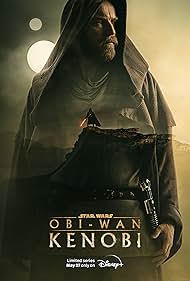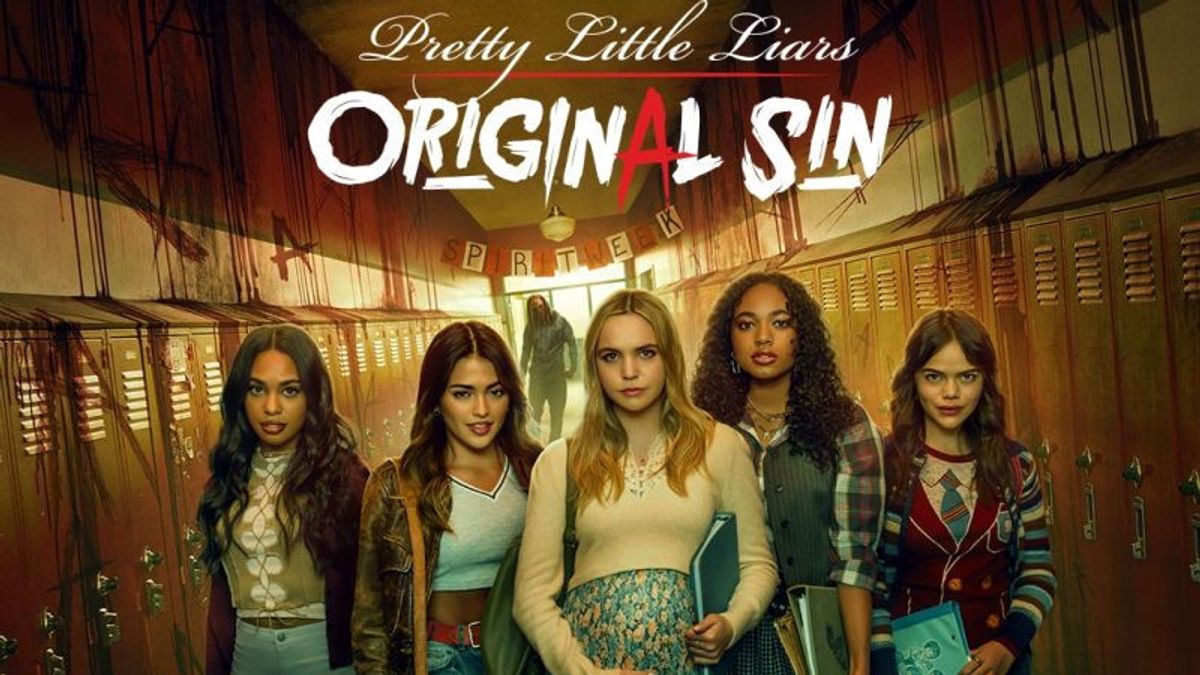The "Obi-Wan Kenobi" film represents a highly anticipated addition to the expansive Star Wars universe, offering fans a deeper exploration of one of its most iconic characters. As part of the broader Star Wars saga, this film delves into themes of redemption, resilience, and the enduring battle between good and evil. With a rich history rooted in the original trilogy and subsequent series, "Obi-Wan Kenobi" aims to bridge past narratives with new storytelling avenues, captivating both longtime enthusiasts and newcomers alike. Its production combines state-of-the-art visual effects, compelling storytelling, and a talented cast, promising an immersive cinematic experience that expands the lore of the galaxy far, far away.
Plot Overview: Exploring the Storyline of "Obi-Wan Kenobi"
Set several years after the dramatic events of "Revenge of the Sith," the "Obi-Wan Kenobi" film centers on the Jedi Master’s quiet life in exile on Tatooine. Haunted by the fall of the Jedi Order and the rise of the Empire, Obi-Wan is tasked with watching over a young Luke Skywalker from afar. The plot thickens when remnants of the Empire’s oppressive regime and dark forces threaten the fragile peace Obi-Wan seeks to maintain. As he confronts his past failures and the shadows of former allies and enemies, he is drawn into a new conflict that tests his resolve and commitment to the Jedi ideals. The narrative intertwines personal redemption with the larger galactic struggle, revealing Obi-Wan’s resilience and growth as he faces emerging threats.
The storyline introduces new characters alongside familiar faces, creating a layered and dynamic plot. A key element involves the pursuit of a rogue Imperial officer seeking to suppress the remaining Jedi and consolidate power. The film explores Obi-Wan’s internal struggles, including guilt and regret, while showcasing his efforts to protect Luke and others from the Empire’s reach. As the story unfolds, themes of sacrifice, hope, and the enduring spirit of resistance are woven into the fabric of the narrative, culminating in intense action sequences and emotionally charged moments that deepen the character’s journey.
The film also provides insights into the political landscape of the galaxy under Imperial rule, highlighting the oppressive tactics used by Darth Vader’s regime. Obi-Wan’s encounters with adversaries and allies alike serve to expand the lore, revealing new facets of the Star Wars universe. Ultimately, the plot emphasizes Obi-Wan’s transformation from a broken exile into a determined guardian, setting the stage for the events that lead up to the original trilogy.
Throughout the film, the storyline balances moments of introspection with high-stakes action, ensuring a compelling viewing experience. It revisits key themes from the original saga, such as the importance of hope and the cost of heroism, while introducing fresh narrative threads that enrich the overarching saga. The plot’s tight pacing and layered character development make "Obi-Wan Kenobi" a pivotal film that connects past and future within the Star Wars universe.
Key Characters and Cast Members in the "Obi-Wan Kenobi" Film
The "Obi-Wan Kenobi" film features a compelling ensemble cast led by Ewan McGregor reprising his iconic role as Obi-Wan Kenobi. McGregor’s portrayal brings depth and nuance to the Jedi Master, capturing his internal struggles and unwavering sense of duty. Hayden Christensen also returns as Darth Vader, delivering a menacing and complex performance that underscores the character’s transformation and ongoing conflict. The film introduces new characters, including a young rebel fighter played by a rising star, and an Imperial officer whose actions significantly impact the narrative arc.
Among the supporting cast, several actors portray key figures within the Imperial hierarchy, each bringing a distinct presence to the story. These characters serve to illustrate the different facets of the Empire’s oppressive regime, from ruthless enforcers to strategic masterminds. The cast also includes talented performers portraying minor characters and local inhabitants of Tatooine, adding authenticity and richness to the film’s setting. Their performances contribute to the immersive atmosphere and help flesh out the galaxy’s diverse populations.
The film’s casting choices emphasize both continuity and innovation within the Star Wars universe. Returning actors maintain the familiar tone and emotional resonance, while newcomers introduce fresh perspectives and dynamics. The performances are complemented by skilled makeup artists, costume designers, and stunt coordinators, creating visually striking characters that resonate with fans. Overall, the cast’s performances are pivotal in conveying the complex themes and emotional depth of the story.
In addition, the film explores the personal arcs of several characters, highlighting their motivations and character development. Obi-Wan’s internal conflict, Darth Vader’s relentless pursuit, and the emerging heroism of new characters all contribute to a layered narrative. The cast’s chemistry and nuanced acting elevate the film, making it not just an action-packed spectacle but also a character-driven story that explores identity, duty, and redemption.
The casting process also aimed to honor the legacy of the original trilogy while welcoming new talent into the franchise. This balance ensures that both veteran fans and new audiences find relatable and compelling characters to invest in. The performances, combined with the screenplay and direction, help solidify "Obi-Wan Kenobi" as a significant chapter in the Star Wars saga.
Setting and Locations: Where the "Obi-Wan Kenobi" Film Takes Place
The primary setting of the "Obi-Wan Kenobi" film is Tatooine, the desert planet famously associated with Luke Skywalker’s childhood. This remote and rugged landscape serves as a symbolic backdrop for Obi-Wan’s exile and inner turmoil. The film captures the planet’s iconic sandy vistas, dilapidated structures, and harsh environmental conditions, creating an atmosphere of solitude and reflection. Tatooine’s familiar terrain provides continuity with previous Star Wars stories while allowing for new visual explorations.
Beyond Tatooine, the film ventures to other locations across the galaxy, including hidden Rebel bases, Imperial strongholds, and mysterious planets that deepen the lore. These diverse environments highlight the vastness of the Star Wars universe, offering a mix of lush landscapes, urban sprawls, and dangerous wilderness. The choice of locations reflects the narrative’s themes of secrecy, resistance, and the ongoing struggle against tyranny. Each setting is carefully designed to enhance the story’s tone and emotional impact.
Filmmakers employed a combination of real sets, CGI environments, and on-location shoots to bring these worlds to life. Advanced CGI techniques enabled the creation of expansive vistas and detailed cityscapes that would be impossible to construct physically. Practical effects and authentic set designs contribute to the immersive quality of the film, making viewers feel as if they are truly traversing these distant worlds. The strategic use of lighting and color palettes further accentuates the mood of each scene.
The locations also serve as a canvas for the film’s visual storytelling, emphasizing themes of isolation, hope, and resilience. The stark deserts of Tatooine contrast with the sterile corridors of Imperial facilities, reflecting the characters’ internal journeys. These settings are not merely backdrops but integral elements that influence the narrative’s progression and emotional resonance. The diverse environments offer a visual feast that enriches the storytelling experience.
Overall, the film’s setting and locations are a testament to the meticulous world-building that characterizes the Star Wars franchise. They provide a tangible sense of scale and history, connecting past stories with the present narrative. The combination of familiar and new worlds ensures that "Obi-Wan Kenobi" remains rooted in the saga’s legacy while expanding its horizons for future storytelling.
Visual Effects and Cinematography in the "Obi-Wan Kenobi" Movie
The visual effects in "Obi-Wan Kenobi" are a hallmark of modern filmmaking, blending cutting-edge CGI with practical effects to create a seamless and immersive universe. The film showcases elaborate space battles, lightsaber duels, and planetary landscapes that push the boundaries of visual storytelling. The use of digital effects enhances the grandeur of the galaxy, allowing for dynamic action sequences and stunning visuals that captivate audiences. These effects are carefully integrated to serve the narrative, emphasizing key moments and character interactions.
Cinematography plays a vital role in establishing the film’s tone and emotional depth. Skilled cinematographers employed a variety of camera techniques, including sweeping wide shots of alien worlds and intimate close-ups that capture character expressions. Lighting design is used effectively to evoke moods, from the stark shadows of Imperial strongholds to the warm glow of Tatooine sunsets. The color palette shifts to reflect the narrative’s emotional beats, reinforcing themes of hope, despair, and resilience.
The film’s visual effects team utilized advanced motion capture technology to bring characters like Darth Vader and other creatures to life with realism and menace. Practical effects, combined with digital enhancements, created authentic-looking costumes, prosthetics, and environments. This hybrid approach provides a tactile quality that enhances immersion and believability. The seamless integration of these elements demonstrates the meticulous craftsmanship behind the film’s visual presentation.
Furthermore, the cinematography emphasizes dynamic action choreography, especially in lightsaber duels and combat scenes. The fluidity and clarity of these sequences are achieved through precise camera work and post-production editing. The visual effects heighten the excitement and intensity, making each confrontation feel visceral and impactful. The director’s vision ensures that the visuals serve both spectacle and storytelling, reinforcing character arcs and thematic elements.
Overall, the combination of impressive visual effects and thoughtful cinematography elevates "Obi-Wan Kenobi" into a visually stunning entry within the Star Wars franchise. It exemplifies how technological innovation can enhance storytelling, creating a cinematic experience that is both breathtaking and meaningful. These elements work together to transport viewers into a galaxy filled with wonder, danger, and hope.
Themes and Motifs Presented in the "Obi-Wan Kenobi" Film
"Obi-Wan Kenobi" explores profound themes that resonate with both the broader Star Wars saga and universal human experiences. Central to the film is the motif of redemption, as Obi-Wan grapples with feelings of guilt and seeks to find purpose after the fall of the Jedi Order. The narrative underscores the idea that



